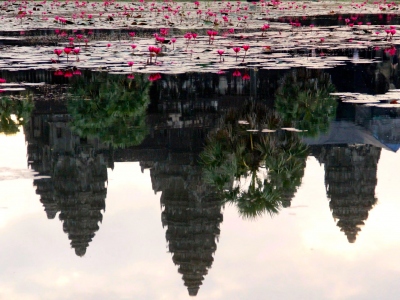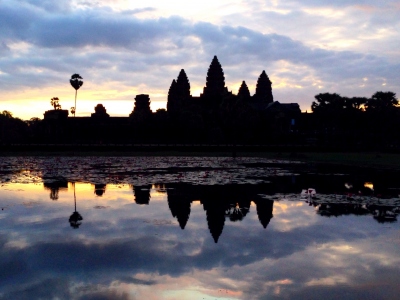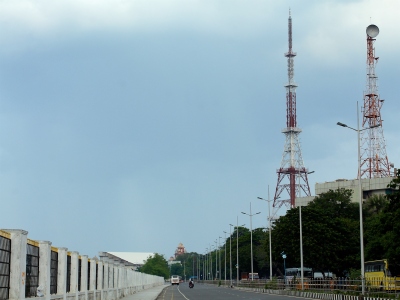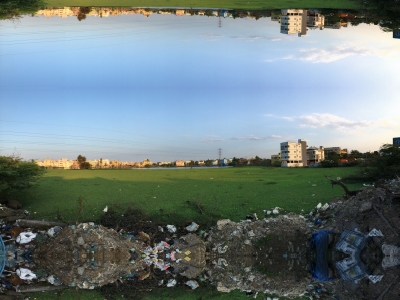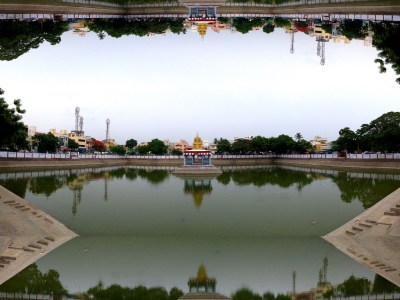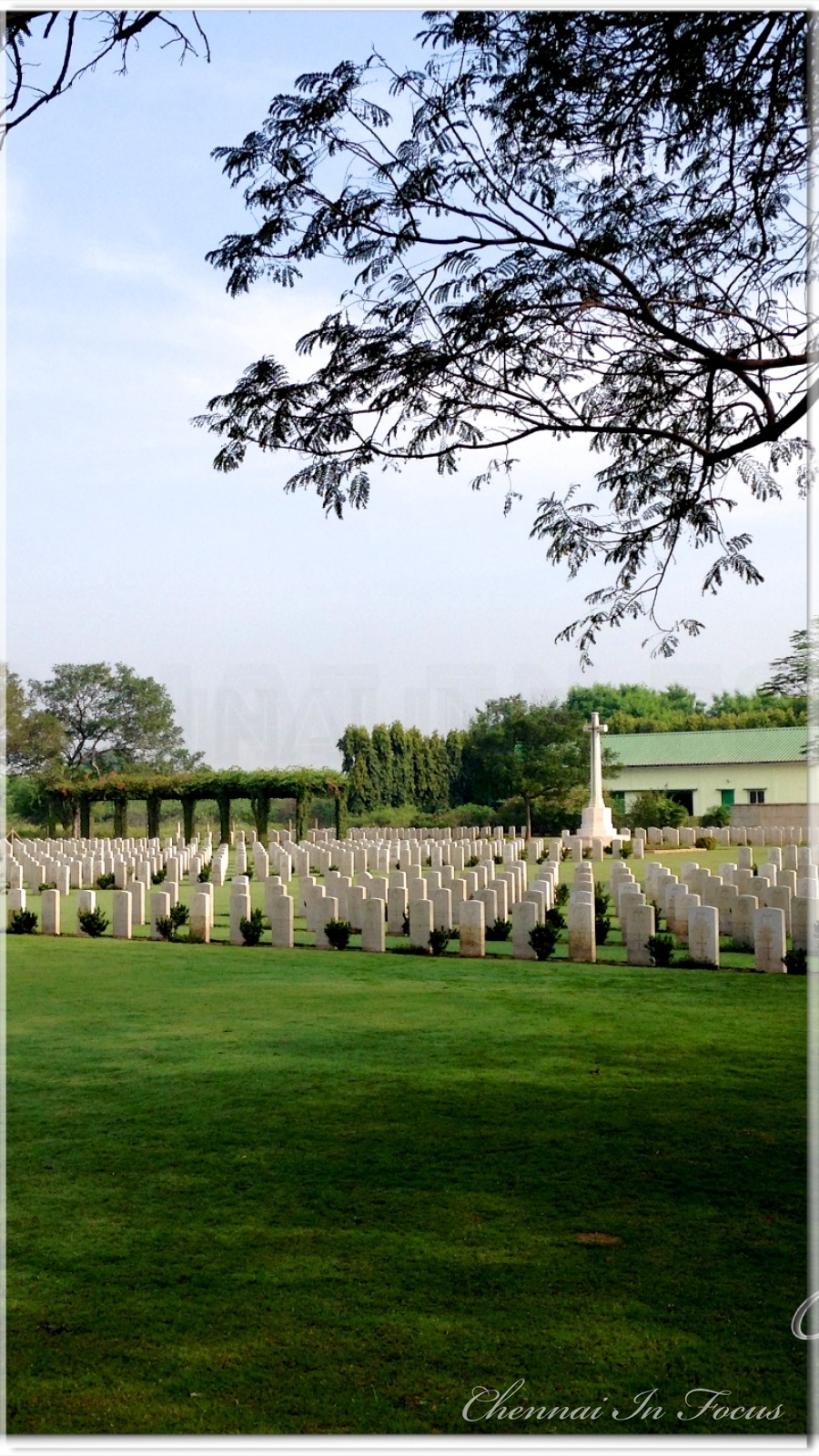Photography
Photography is the art, application, and practice of creating durable images by recording light or other electromagnetic radiation, either electronically by means of an image sensor, or chemically by means of a light-sensitive material such as photographic film.
Angkor Wat
Angkor Wat (Khmer: អង្គរវត្ត or "Capital Temple") is a temple complex in Cambodia and the largest religious monument in the world, with the site measuring 162.6 hectares (1,626,000 m2; 402 acres). It was originally constructed as a Hindu temple of god Vishnu for the Khmer Empire, gradually transforming into a Buddhist temple toward the end of the 12th century. It was built by the Khmer King Suryavarman II in the early 12th century in Yaśodharapura (Khmer: យសោធរបុរៈ, present-day Angkor), the capital of the Khmer Empire, as his state temple and eventual mausoleum.
Panorama
A panorama is any wide-angle view or representation of physical space, whether in painting, drawing, photography, film, seismic images or a three-dimensional model. The word was originally coined in the 18th century by the English (Irish descent) painter Robert Barker to describe his panoramic paintings of Edinburgh and London. The motion-picture term panning is derived from panorama.
Wat Phra Yai
On the very top of Pratumnak Hill, between Pattaya and Jomtien Beach, you can’t fail to notice an enormous 18 meter tall Buddha popping up through the trees. This Big Buddha – the largest in the region – is the highlight of Wat Phra Yai, a temple built in the 1940s when Pattaya was nothing more than a fishing village. The Big Buddha is extremely popular with tour groups who love to see the intricate design of the statue and the temple complex, but it is also revered by local people who come to pray at the temple.

